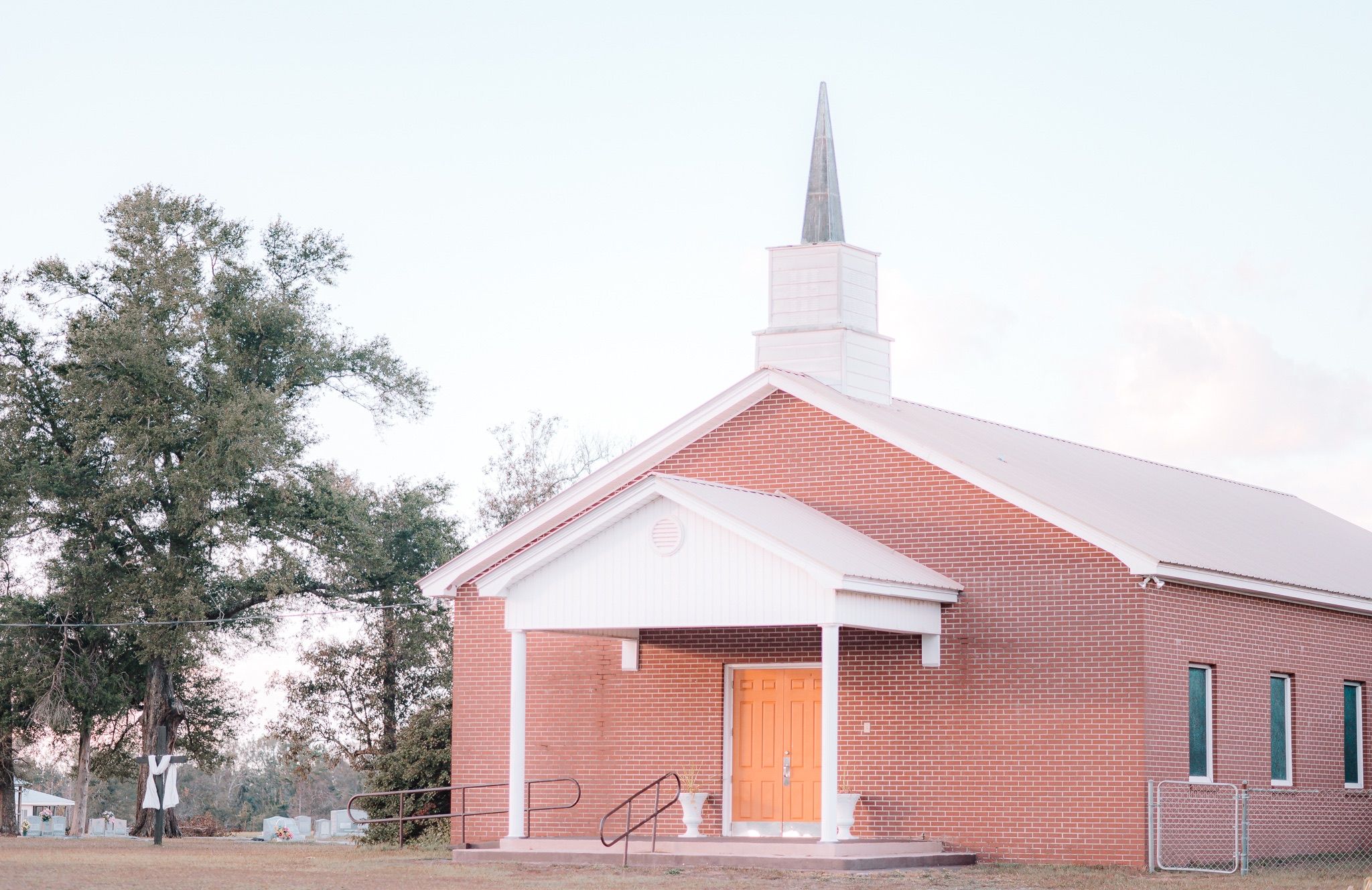3 Reasons Churches Don’t Revitalize- And 1 Thing You Can Do About It
3 Reasons Churches Don’t Revitalize- And 1 Thing You Can Do About It
When thinking about the reason our congregations are hesitant to revitalize, we often say, “They just don’t want to change.” And while that may be partly true, it isn’t the whole reason, nor is it the sole reason.
During year three of our church’s revitalization process, my husband received an email from a long-time church member. This church member was very frustrated and disgruntled over a decision my husband made regarding small groups at our church. Instead of calling our Sunday morning groups by their former name, “Sunday School,” he opted to encompass all of our small groups under the name, “Connect Groups.” Sunday morning, Sunday night, weekday nights, on-campus, or out of homes, they would all be under the banner of “Connect Groups.” Her email started with her main complaint, but unraveled midway through to combine all of her frustration at the changes made during the three years we had been ministering there. For several paragraphs, this woman compared the way things had always been done against the way things were being done now. For each change, she listed all the ways it was better before– ending the email with the statement, “I just think there’s no need to change anything. Everything needs to stay the same as it always has. There’s no reason to do things differently.”
My husband responded simply, “Thank you for your email. I certainly enjoy being able to get quick, efficient communication from my congregation members. Seeing as how change is so frustrating for you, I will respond via a handwritten letter. You should receive it in several business days.”
I’m kidding, of course.
My husband has infinite patience and responded kindly and warmly and explained the necessity of the change. Unfortunately, he did not win her over; the woman would correct anyone who used “connect group” to refer to a group that met on Sunday mornings at church until the day she left our church, still angry and frustrated. This woman is no different than countless congregation members across all of our churches, and I’m sure each of you reading this could share your own file of “Monday Morning Uplifting” emails from sheep that bite. So why are some churches, and some congregants, so unwilling to revitalize?
In Episode 99, Jimbo and Bob (I’m really trying to get the “Jimbob” moniker to stick but I digress) discuss three reasons why a church might not want to revitalize: a lack of self-awareness, a desire to control, and the fear of loss.
The Crack in the Ceiling

One of the main reasons a congregation resists revitalization is a lack of self-awareness. The church just isn’t aware of just how bad the issues are, whether they be the facilities, the programming, or the church governance and polity. Have you ever seen the commercial for the room freshening spray where the advertiser refers to being “nose-blind” to smells? That’s the picture of some congregations. They don’t see the need for revitalization because things don’t seem that bad to them. It takes an outside perspective to address the issue, because only an outsider can see it.
A pastor I know began to look at remodeling his church’s sanctuary. There was money in the budget to do it without going into debt, and the sanctuary’s aesthetic was dated and worn. But more than the cosmetic reasons for the remodel, the church had serious structural issues that needed to be addressed. There were cracks in the ceiling that were so large, swarms of wasps would swoop down from them during the service and dive-bomb members of the congregation. The addition and subtraction of several instruments and sound equipment over the years had resulted in wires and speakers dangling precariously from the ceiling. And yet, when faced with the decision to remodel, the church voted to refrain from doing any major remodeling. One long time member stood up and said, “That crack in the ceiling has been there since I started here in 1960 and it’s not hurting anything!” The pastor left the church shortly after, discouraged and demoralized by the church’s lack of awareness and vision.
Sometimes this lack of self-awareness even extends past the facilities and into the church’s reasons for decline. “The community changed, they just aren’t the same as they used to be,” is a common refrain. “The doors are open, but they won’t come in!” These church members resent the community, and as Mark Clifton often says, “You can’t reach people you resent.” Until your church loves their community, they will never feel the need to reach them– and reaching your community is not just a vital part of revitalization, but is also a commandment from your Creator. (Thom Rainer’s book, Anatomy of a Revived Church and Mark Clifton’s book Reclaiming Glory are both excellent resources to help your church see the connection between loving your community and reaching them with the Gospel.) Sometimes, churches will say, “The church down the street is to blame!” as though there aren’t enough lost people to go around. Or, “The former pastor messed everything up!” But the key is the lack of awareness of their own part in the church’s decline. There is a reluctance to admit the need to change their behavior or their surroundings.
Who is in Control Here?
Another reason churches are hesitant to revitalize is the loss of control. Maybe a former pastor came in with a “dictator” mentality and ran people off with his authoritarian style of leadership. Alternatively, maybe the former pastor was weak and ineffective and the church is now used to controlling its own fate and the idea of revitalizing and changing pushes against that.
Occasionally, there are “power brokers” in a church. These people, and sometimes whole families, have gone from being generous givers in the past to controlling congregants now. Having a new pastor come in and give them advice to change something creates conflict between them and him. They may even “talk” with their wallets, refusing to tithe until their demands are met.
This struggle for control can cause pastors who deeply desire revitalization to give in and yield to those who cannot be convinced of the need to change course. The church then continues in plateau or in a downward trajectory until it eventually dies.
Change is Scary– but Loss is the Real Fear

This brings us to the third reason churches don’t revitalize: Fear. Many pastors assume that their congregation is scared of change. But that’s not entirely accurate. I would imagine most of your congregation is riding around in cars with fuel injection systems and power steering, and some have even embraced such modern amenities as backup cameras, remote start, and keyless entry. Likely, too, that they use washing machines, dishwashers, cell phones, and microwaves on occasion. Remember our friend from the introduction? She used email, a relatively modern way to communicate, to express her disdain for change. So it isn’t a fear of change that scares people– it’s a fear of loss.
Our culture has created a climate of comfort in all areas. We seek, above all else, to be comfortable. And when so much of the world changes so rapidly, sometimes our congregation just wants Sunday morning to be the one place where their friends, their pastor, their songs, and their pew stay the same. They fear not so much the change, but the loss of that comfort zone and that feeling of safety that comes with it. There is stability in staying the course, even if we’ve determined that the course isn’t working.
A Spiritual Problem with a Scriptural Solution
The problem with all of these excuses against revitalization is a central one– a lack of faith in Jesus and what He can do for our churches. This is a spiritual problem, one where the culture of a church is based around the congregation’s abilities, not the supernatural power of God. The lack of awareness, desire for control, and the fear of loss of comfort, are all symptoms of a larger problem in which churches seek their own desires above the need to evangelize, adapt, and love the community they have been given.
The culture of the church has to change before any revitalization strategy can ever be effective. This is why pastors who enter into replants and revitalizations must practice holy patience. They must be able to pray while they wait. The pastor must be able to, as Bob says, “lead his people to understand who they are in Christ. He has to lead them to understand the mission of the church. And he asked to lead them to understand the power of Christ to accomplish that mission.”
This is a scriptural solution to a spiritual problem. Scripture should be our basis for revitalization, not current trends. When we seek out what God has to say to us and to our churches, we are better able to guide our church toward Biblical Revitalization that reaches our community with the Gospel and that breathes Holy Spirit-filled life back into the dying church.















